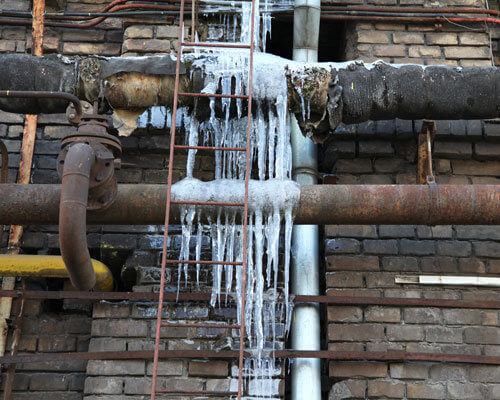Preventing Frozen Pipes in Winter: Professional Advice
Preventing Frozen Pipes in Winter: Professional Advice
Blog Article
We have come across the article involving Prevent Frozen Pipes down the page on the internet and decided it made perfect sense to write about it with you on my blog.

Cold weather can wreak havoc on your plumbing, specifically by freezing pipes. Here's exactly how to prevent it from taking place and what to do if it does.
Introduction
As temperature levels decrease, the threat of frozen pipes rises, potentially resulting in expensive repair work and water damage. Comprehending exactly how to avoid frozen pipes is critical for house owners in cold environments.
Comprehending Icy Pipes
What creates pipes to ice up?
Pipes ice up when exposed to temperatures below 32 ° F (0 ° C) for expanded durations. As water inside the pipelines ices up, it increases, taxing the pipe wall surfaces and potentially triggering them to rupture.
Dangers and problems
Frozen pipes can cause water disruptions, building damages, and costly repair services. Burst pipes can flooding homes and trigger substantial structural damages.
Signs of Frozen Piping
Determining frozen pipelines early can avoid them from bursting.
Exactly how to identify icy pipes
Seek lowered water flow from taps, unusual smells or noises from pipelines, and noticeable frost on subjected pipelines.
Prevention Tips
Protecting prone pipelines
Wrap pipes in insulation sleeves or make use of warm tape to secure them from freezing temperature levels. Concentrate on pipelines in unheated or outside areas of the home.
Heating methods
Maintain interior spaces sufficiently heated up, particularly areas with pipes. Open up cupboard doors to allow cozy air to circulate around pipes under sinks.
Shielding Exterior Plumbing
Garden pipes and outside taps
Detach and drain pipes yard hoses before winter. Install frost-proof faucets or cover exterior taps with insulated caps.
What to Do If Your Pipes Freeze
Immediate actions to take
If you suspect frozen pipes, maintain faucets available to relieve stress as the ice melts. Make use of a hairdryer or towels taken in warm water to thaw pipes gradually.
Long-Term Solutions
Structural adjustments
Take into consideration rerouting pipes far from exterior wall surfaces or unheated locations. Add added insulation to attics, cellars, and crawl spaces.
Upgrading insulation
Buy premium insulation for pipelines, attic rooms, and walls. Appropriate insulation aids maintain constant temperature levels and decreases the danger of icy pipelines.
Conclusion
Preventing frozen pipelines calls for aggressive measures and quick reactions. By recognizing the reasons, indicators, and safety nets, homeowners can secure their pipes throughout winter.
5 Ways to Prevent Frozen Pipes
Drain Outdoor Faucets and Disconnect Hoses
First, close the shut-off valve that controls the flow of water in the pipe to your outdoor faucet. Then, head outside to disconnect and drain your hose and open the outdoor faucet to allow the water to completely drain out of the line. Turn off the faucet when done. Finally, head back to the shut-off valve and drain the remaining water inside the pipe into a bucket or container. Additionally, if you have a home irrigation system, you should consider hiring an expert to clear the system of water each year.
Insulate Pipes
One of the best and most cost-effective methods for preventing frozen water pipes is to wrap your pipes with insulation. This is especially important for areas in your home that aren’t exposed to heat, such as an attic. We suggest using foam sleeves, which can typically be found at your local hardware store.
Keep Heat Running at 65
Your pipes are located inside your walls, and the temperature there is much colder than the rest of the house. To prevent your pipes from freezing, The Insurance Information Institute suggests that you keep your home heated to at least 65 degrees, even when traveling. You may want to invest in smart devices that can keep an eye on the temperature in your home while you’re away.
Leave Water Dripping
Moving water — even a small trickle — can prevent ice from forming inside your pipes. When freezing temps are imminent, start a drip of water from all faucets that serve exposed pipes. Leaving a few faucets running will also help relieve pressure inside the pipes and help prevent a rupture if the water inside freezes.
Open Cupboard Doors
Warm your kitchen and bathroom pipes by opening cupboards and vanities. You should also leave your interior doors ajar to help warm air circulate evenly throughout your home.

I found that article on How To Avoid Freezing Pipes while doing a search on the web. Kindly pause to distribute this blog if you liked it. Thanks a bunch for your time. Don't forget to come by our blog back soon.
Schedule Estimate Report this page